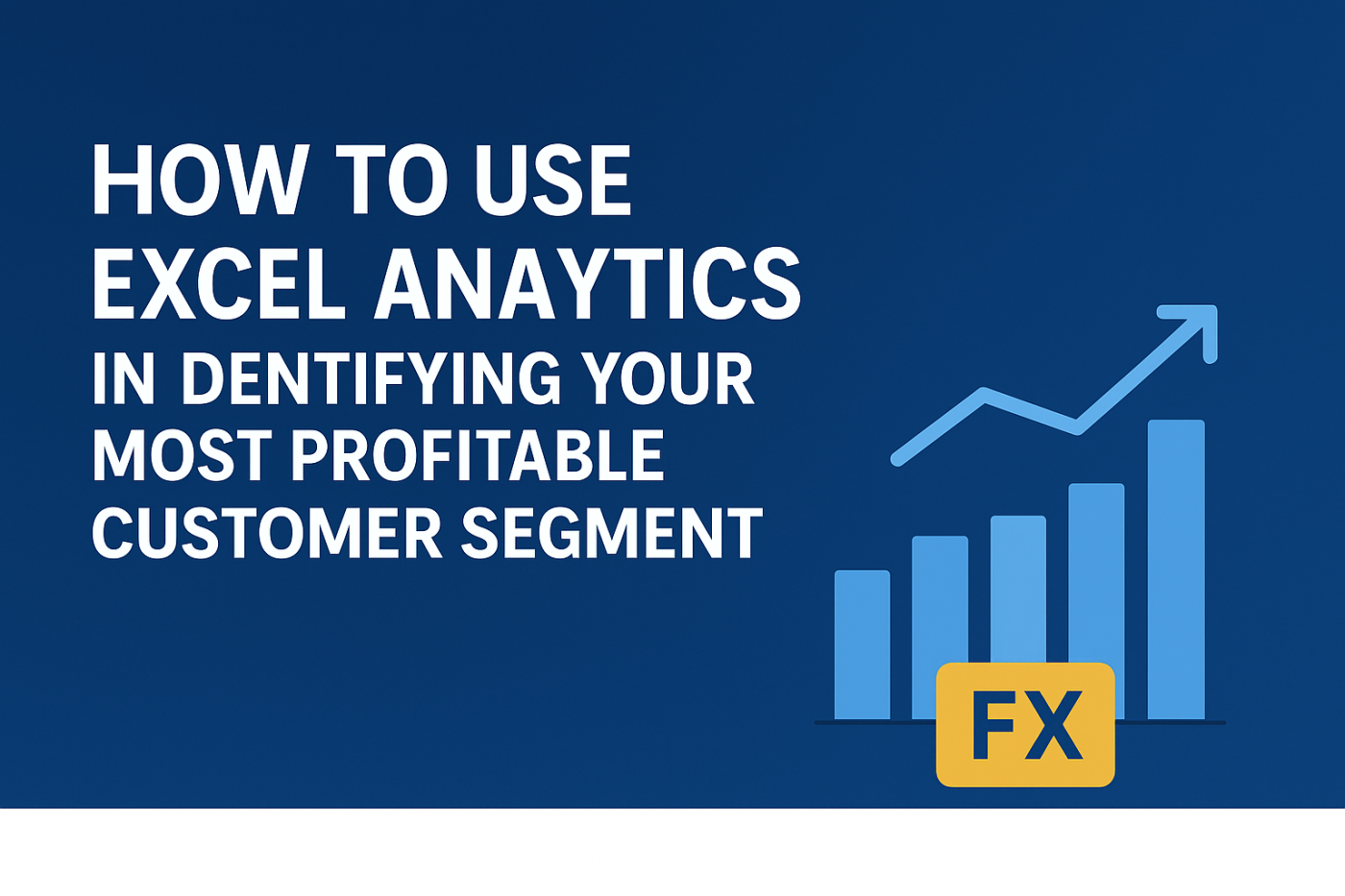
SOPHIA OLISE
 Data Analysis
Data Analysis
 0 comment
0 comment
 06 Oct, 2025
06 Oct, 2025

In 2025, successful Nigerian businesses, from growing e-commerce brands in Lagos to SMEs in Umuahia, realize that growth is not achieved by chasing every customer—it comes from understanding and prioritizing the right customers. Data analytics makes this critical shift possible by revealing exactly who buys the most, who stays the longest, and who contributes the highest net profit.
Identifying your Most Profitable Customer Segment (MPCS) transforms your sales strategy. By focusing marketing effort and budget on the top 20% of your customer base, you maximize your Return on Investment (ROI) and achieve predictable, sustainable revenue growth.
Your analysis is only as good as its foundation. Start by consolidating data from all transaction points: POS systems, e-commerce platforms, and CRM tools. Export your sales logs into a usable format (Excel or Power BI).
Key Data Points Required:
Normalization is Key: Before analyzing, use Excel functions like TRIM and PROPER to ensure uniformity (e.g., preventing inconsistent entries like "Lagos" vs. "lagos State"). Clean data ensures accurate segmentation in the next step.
Once the data is clean, the focus shifts to aggregation and measuring value.
Example: By analyzing LTV, you may find that customers who buy low-margin products frequently are less profitable over time than those who buy high-margin products rarely.
The RFM (Recency, Frequency, Monetary Value) model is the industry standard for segmentation. It categorizes customers based on their historical purchasing behavior:
By assigning scores (e.g., 1 to 5) for each dimension, you identify clear segments:
Export to Sheets
This analysis provides a clear, actionable definition of your Most Profitable Customer Segment.
Segmentation informs resource allocation. Instead of mass marketing, you must now divert budget and effort away from low-profit segments and toward your identified Champions.
Customer behavior is fluid. Your analysis cannot be a one-time exercise.
Data analytics is the essential tool for smart business growth. By strategically identifying and prioritizing your most profitable customer segments using tools like Excel and Power BI, you stop chasing fleeting sales and start building a loyal, high-value customer base that guarantees long-term revenue.
Ready to learn how to use data analytics to understand your customers and grow your sales?
Join ECR Academy’s Data Analytics Training today in Umuahia, Abia State. Learn Excel, SQL, and Power BI with practical, real-world projects that empower you to make smarter, data-driven business decisions. Enroll now and take the first step toward becoming an indispensable analyst!
Customer segmentation is the process of dividing your customers into groups based on shared characteristics like spending, frequency, or behavior.
You can use Excel, Power BI, SQL, or Google Sheets to segment and visualize your data.
Absolutely. Even a small store or online business can use analytics to track customer spending and increase profitability.
At least once a month to ensure you keep up with changing customer behaviors and market trends.
ECR Academy offers hands-on training in Excel, SQL, and Power BI—tools you can use to identify customer segments, analyze sales, and grow your business.
SOPHIA OLISE
Data Analyst
Olise Sophia Amarachi is a passionate and purpose-driven data analyst and digital skills advocate based in Nigeria. With a strong foundation in Excel, Power BI, and SQL, she empowers others—especially young people and corps members—through practical training, tech mentorship, and values-based leadership. Sophia’s journey into data analysis began during her NYSC year in Abia State, where she committed herself to learning and growing from scratch. Today, she shares her knowledge through online classes, challenges, and hands-on projects, including dashboards and reports that translate complex data into clear insights.
0 comment